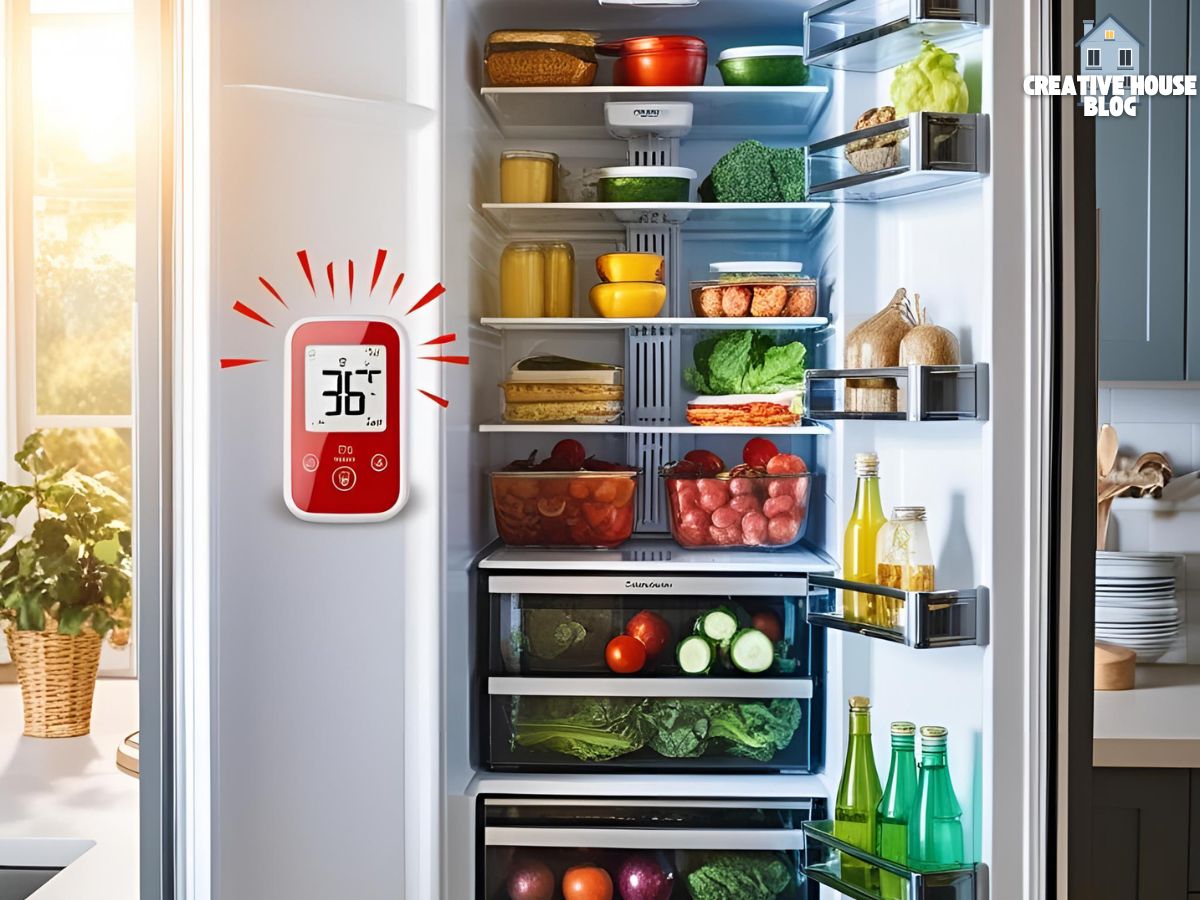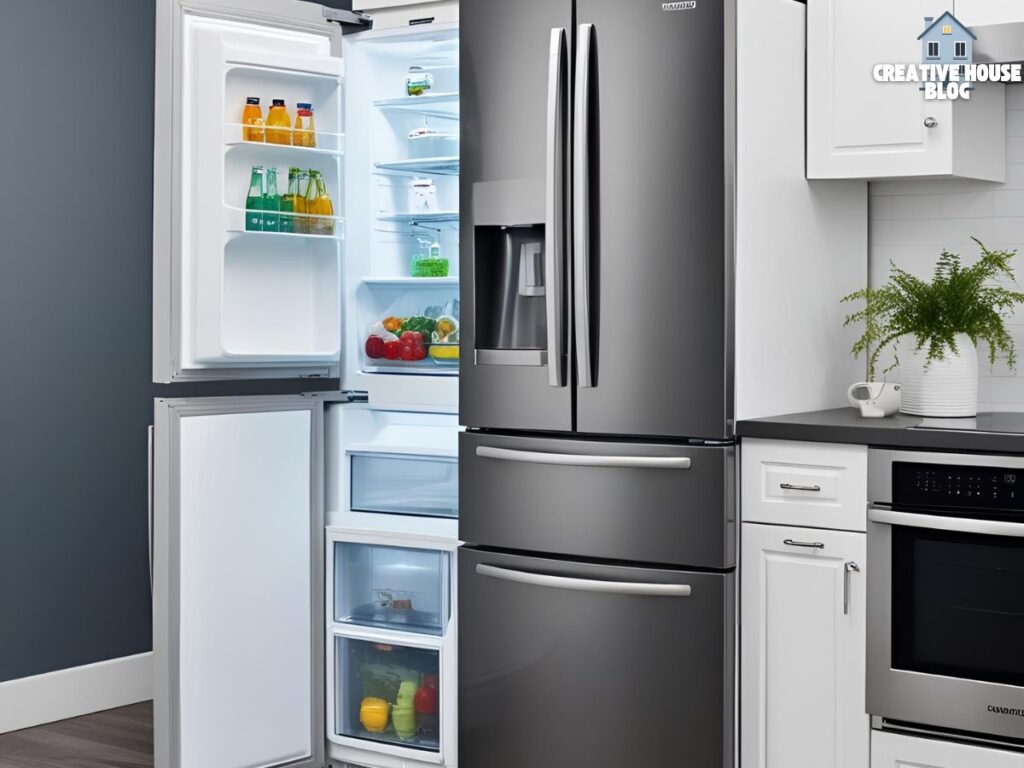It is very frustrating when your Frigidaire refrigerator not cooling as it should.
The main reasons are unclean condenser coils, an old gasket, or a malfunctioning thermostat, which raises the refrigerator’s internal temperature and reduces airflow.
In this thorough tutorial, we’ll explain the typical problems that Frigidaire refrigerators have with their cooling systems and offer professional fixes to help you diagnose and restore your refrigerator’s peak efficiency.

Key Takeways
Expert Guide
Frigidaire Refrigerator Not Cooling: Common Signs
Identifying the warning signals that your Frigidaire refrigerator not cooling correctly is critical.

Related Article: Frigidaire Refrigerator Not Cooling: 6 Simple Troubleshooting to Fix This Issue
- Warm interior: The refrigerator’s inside becoming substantially warmer is the most evident indicator.
- Food spoilage: Meat and dairy products that spoil more quickly than usual are direct signs that the refrigerator isn’t keeping the proper temperature.
- Ice accumulation in the freezer: If the refrigerator section stays warm but your freezer is over-frosting, there may be a problem with the airflow or defrosting systems.
- Strange sounds: Noises such as whirring, clicking, or clunking may indicate problems with the compressor or fans.
- Water Leakage: Condensation from inadequate cooling may cause water to collect at the refrigerator’s base or inside.
- Error codes: When cooling problems occur, the digital display on certain contemporary Frigidaire models may display trouble codes.
Related Article: Maytag Refrigerator Not Cooling: 6 Causes with Effective Troubleshooting
Frigidaire Refrigerator Not Cooling: Potential Reasons and Fixes
These are the reasons and some effective fixes to the Frigidaire refrigerator not cooling issue.
1. Dirty condenser coils
The condenser coils provide cool air for the appliance by cooling the refrigerant. The interior temperature may increase if the coils become unclean since they won’t be able to cool the refrigerant.
To ensure the coils are working correctly to cool the refrigerator, clean the coils every six months.

Here’s a quick and simple method for cleaning Frigidaire refrigerator coils:
To find the location of the condenser coils on your refrigerator model, check your user manual.
Many are concealed behind a rear access panel or a front grille at the bottom of the refrigerator.
- Unplug the refrigerator.
- To get to the coils, take off the panel or grille.
- Use a hoover attachment on a narrow hose to clean the coils and the vicinity.
- To clean any remaining dirt or debris, use an appliance brush.
- If there is still dust or grime on the floor, clean it up.
- Restore the refrigerator’s electricity by replacing the panel or grille.
Related Article: Miele Refrigerator Not Cooling: A Step-by-Step Guide
2. Clogged Air Filter
For the refrigerator to stay cold, a steady flow of chilly air is necessary. However, blockages may eventually form in the air filter. Fortunately, changing an outdated air filter is simple.
- Take off the old air filter
Most types have the air filter located beneath the bin in the door panel. Thus, remove the filter after opening the door panel. But handle it with caution. You don’t want your filter to get messy with all the particles on it.
- Throw Out the Old Filter
It is not possible to reuse refrigerator filters. When necessary, make sure to dispose of the older ones. Remember that you should get a new filter if the existing one is about six months old.
- Put the new filter inside your refrigerator
Install your new air filter carefully. Avoid pushing it in as this could cause it to bend and lose its effectiveness.
3. Faulty electronic Control board
A faulty electrical control board can cause a refrigerator to malfunction, such as losing electricity or cooling or leaking water.
This is because the board acts as the refrigerator’s brain, managing vital activities like controlling the ice maker, running fans, managing defrost cycles, controlling dispenser functions, and regulating internal temperatures.
Components including automated doors, if they are installed, may lose communication if the electronic control board malfunctions.

The refrigerator may make a clicking or chattering sound and smell like it’s burning due to a faulty board.
A Sears Home Services expert should perform diagnostic testing on the board to see whether replacement is necessary because of the possible influence on several components.
Related Article: Whirlpool Refrigerator Not Cooling: 8 Troubleshooting Steps to Fix This Issue
4. Dysfunctional Start Relay
A defective start relay is the cause of an issue when the compressor is completely silent yet the condenser fan is operating.
The refrigerator won’t cool if the compressor doesn’t start due to a malfunctioning start relay.
But how to check that your start relay is not working?
Take the start relay out of the refrigerator. After that, shake it to check if it rattles. Your relay is probably damaged if it does. In other cases, you can check the relay’s functionality with a power tester.
Simply use an ohmmeter to check for continuity. When there is discontinuity, something is wrong.
However, make sure you got the correct part. Check your refrigerator’s handbook for the model number and information on what part is required.
Open the panel located at the rear of your refrigerator. By checking your compressor, you may locate the start relay.
It’s the little container on the compressor’s side. Once you locate the start relay, carefully remove it with a flathead screwdriver.
Avoid going near any of the connections and cables close to the relay. If you see debris accumulating on the relay’s body, clean it off.
The relay may occasionally stop functioning due to dirt accumulation that impairs its performance. Remove the accumulation if that’s the case. If required, you can also replace the relay.
5. Evaporator Fan Motor
Air is drawn across the cooling coils by the evaporator fan motor, which then distributes it throughout the freezer and refrigerator sections.
The refrigerator compartment won’t receive cold air circulation if the evaporator fan isn’t operating. If this happens, the refrigerator won’t become cold, but the freezer might.
If the evaporator fan motor isn’t working properly, try manually rotating the fan blade. Change the fan motor if the fan blade is not turning freely. Additionally, replace the motor if it is making an abnormally loud noise.
Lastly, check for continuity in the motor windings with a multimeter if the motor is not operating at all. Change the evaporator fan motor if the windings are not continuous.
6. Broken Compressor
The compressor in your refrigerator is simply a pump that circulates refrigerant throughout the cooling system.
Although they don’t break down very often, compressors might malfunction for some reasons.
The compressor may experience excessive strain and wear if there is an imbalance in the amount of refrigerant in the system. The compressor may potentially suffer damage if air, moisture, or other debris enters it.
Test your compressor with a multimeter. It will be necessary to replace the compressor if the multimeter indicates an open circuit.
Explore Also:
Dietsheriff
Gigasecurehome
Mycleanseplan
Only a certified technician can replace the compressor because it requires draining the refrigerant from the system.
FAQs Of Frigidaire Refrigerator Not Cooling
Why isn’t my Frigidaire refrigerator cooling?
A damaged evaporator, a malfunctioning electronic control board, or a locked compressor are the most common reasons for your Frigidaire refrigerator’s inability to cool.
How can a refrigerator that isn’t chilling be reset?
Follow the tutorial hyperlinked.
What is the first item you should check when a refrigerator stops cooling?
Examine the refrigerator’s internal air vents.
Which component of the refrigerator is in charge of cooling?
The refrigerator’s actual cooling takes place in the evaporator coils.




